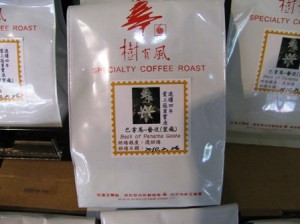- A Molecular Phylogenetic Framework for Timothy (Phleum pratense L.) Improvement. We have the tools, and the instruction manual, but lack the raw materials.
- Open access resources for genome-wide association mapping in rice. Tools, manual AND raw materials, all on one handy platform.
- Why do US Corn Yields Increase? The Contributions of Genetics, Agronomy, and Policy Instruments. Pioneer “era” hybrids released 2000-2009 were more diverse than landraces cultivated in central Iowa during the late 19th century.
- Barriers to Eating Traditional Foods Vary by Age Group in Ecuador With Biodiversity Loss as a Key Issue. Young people liked traditional foods for their health benefits and good taste; adults for the money they brought in.
- Do Smallholder, Mixed Crop-Livestock Livelihoods Encourage Sustainable Agricultural Practices? A Meta-Analysis. Size doesn’t matter.
- Evolutionary dynamics and biogeography of Musaceae reveal a correlation between the diversification of the banana family and the geological and climatic history of Southeast Asia. We have geology and climate to thank for bananas.
- High variability in flavonoid contents and composition between different North-European currant (Ribes spp.) varieties. Smaller is better in redcurrants, but not in blackcurrants.
- Origins of cattle on Chirikof Island, Alaska, elucidated from genome-wide SNP genotypes. A unique mixture of East Asian and European breeds, plus strong selection.
Nibbles: Cover crops, Viet coconut, Water maps, Mao’s mango, Tudor bread, Belgian gardening, IRRI fingerprints, Stay green barley, Miniature donkey
- Uncovering cover crops, the NY Times way.
- Uncovering coconut cultivation in Vietnam, the Roland Bourdeix way.
- Where to expect water shortages, and irrigation. Crying for a mashup.
- When a mango is not just a mango.
- Bread, and much else, according to the Tudors.
- A Belgian plantsman is revolutionizing gardening. No, really.
- How genomics will revolutionize rice breeding. No, really.
- How to get deeper barley roots for drought tolerance? Look to sorghum.
- And today’s miniature livestock is…a donkey.
The hipster future of coffee starts with a genebank
I started a post a few days ago with a quote suggesting that all that commercial farmers are interested in is yield. So let’s balance that today with this:
Geisha in undoubtedly a luxury, but in one important way, it deserves the hype. It is the first coffee to be grown commercially just because it tastes good.
 We blogged about the journey of the remarkable coffee landrace called Geisha (or Gesha) a few years ago: from Ethiopia’s forests to the CATIE genebank in Costa Rica to the Peterson family farm in Panama to all over the world, or, more specifically, a hipster coffee shop in Taiwan. But Hanna Neuschwander‘s Coffee in the New Millennium tells the story at much greater length, not to mention with much greater skill. For example, I wish I had thought to describe hillside coffee plantations, with their neat, undulating rows of bushes, as “living corduroy.”
We blogged about the journey of the remarkable coffee landrace called Geisha (or Gesha) a few years ago: from Ethiopia’s forests to the CATIE genebank in Costa Rica to the Peterson family farm in Panama to all over the world, or, more specifically, a hipster coffee shop in Taiwan. But Hanna Neuschwander‘s Coffee in the New Millennium tells the story at much greater length, not to mention with much greater skill. For example, I wish I had thought to describe hillside coffee plantations, with their neat, undulating rows of bushes, as “living corduroy.”
The piece ends with a neat juxtaposition between World Coffee Research’s monumental International Multi-location Variety Trials and the more geographically focussed, but no less ambitious, in its own way, effort by the Peterson family. They’re looking for a new Geisha among hundreds of other Ethiopian landraces they are now testing on their Panamanian farm. I only have one bone to pick with Ms Neuschwander: why not fully acknowledge the role of the genebank at CATIE in all this, rather than just referring, anonymously, to “a research facility in Costa Rica”?
Nibbles: Spinifex industry, Tsiperifery pepper, Pacific taro, Coffee double, Guadeloupe genebanks, Cucumber history, Gourmet maize, Peruvian cuisine, Heirloom rice
- Spinifex fibres for ultra-thin condoms, with indigenous approval.
- Piper borbonense getting its 15 minutes.
- Cook Islands shares taros with Samoa. Fingers crossed they’re TLB resistant.
- A couple of videos you may only be able to get on Facebook, or at least I can’t find other sources: Ethiopian coffee ceremony, and INRA/CIRAD’s banana and yam collections in Guadeloupe.
- Speaking of coffee, drink it while you can. And yes, it’s China’s fault.
- The cucumber in England through the ages.
- Gourmet maize in Oaxaca right now.
- All kinds of gourmet food in Peru right now too.
- Ok, ok, a Filipina chef on gourmet heirloom rice too.
Nibbles: Poleward migration, Pulse infographic, Vodka, Ancient horse DNA, Old fish, Certified cacao, On farm book, Coarse millets, Banana diversity, Pearl millet demo
- Species flying poleward.
- FAO unveils pulse infographic. No word on whether any are harvestable by machine.
- Potato farmer adds value the old-fashioned way.
- Talking of old, here’s a really old horse.
- And the oldest evidence of fermentation for food preservation. But you’ll need a strong stomach.
- KitKat is certified crap.
- How (and Why) Farmers Maintain Crop Diversity: The Book. Some reviews.
- And here’s a specific example from India.
- And here, courtesy of Bioversity’s Ann Tutwiler, is why farmers need some help sometimes.
- Oh and here’s another one. People visit ICRISAT genebank in Niger, see stuff they like.